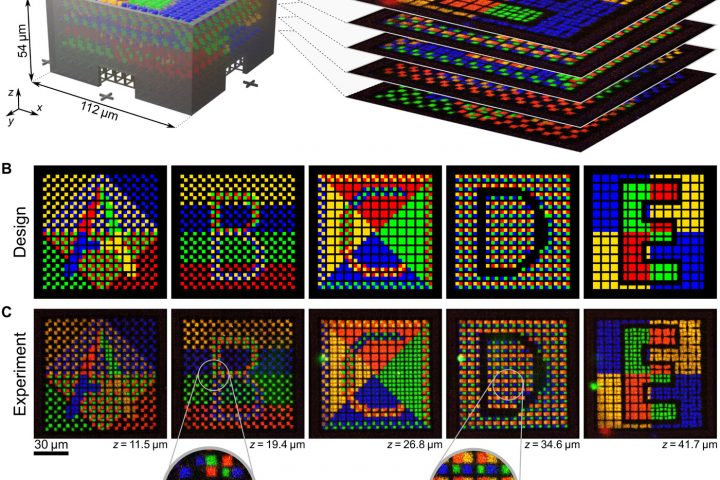Current techniques provide 3D printing of structures as small as few nanometers. Main candidates from producing complex 3D structures are two-photon lithography, ion-beam lithography and Atomic force microscopy based lithographic technique. The latter two techniques will be discussed in future posts. Two-photon lithography is the fastest of the three techniques. Two-photon lithography or direct laser writing is promising in this aspect because it allows to make complex features of any material with a reasonable transparency to near IR radiation. A tightly focused laser beam is scanned inside a photoactive medium to initiate highly localized photoinitiated chemical changes resulting in solidified micro-structure.
This sped up video (10X normal speed) has been produced and shared by Nanoscribe which is the leading manufacturer of two-photon lithographic systems. Here the optical 3d printing of a space ship replica can be seen. The structure is built up in a layer by layer fashion by spatially resolved solidification of a photo-crosslinkable polymer by manipulation of laser focus inside the transparent photopolymer. The video is captured through a high magnification optical microscope.
The progression of 3D fabrication can be clearly seen if you look carefully at the video. Two-photon lithography reduced each 3D structure into a stack of 2D structrures through a mathematical slicing of the original 3D design. During fabrication all the points lying in the same XY plane are fabricated together, after this the laser focus moves up through the Z-axis and fabricates the next set of points lying on a higher XY plane. Finally a scanning electron microscopy (SEM) image of the microsized space ship is presented.





